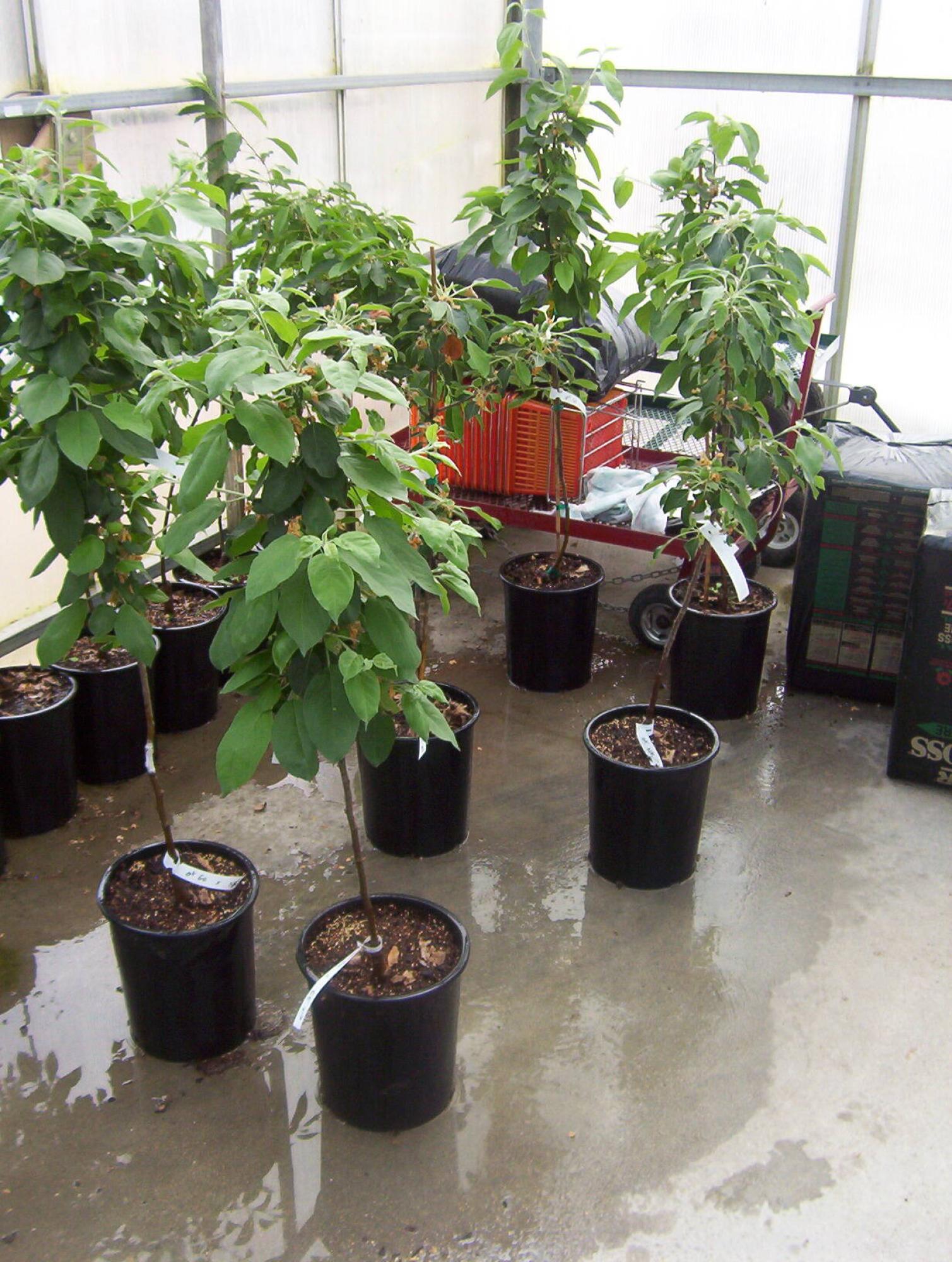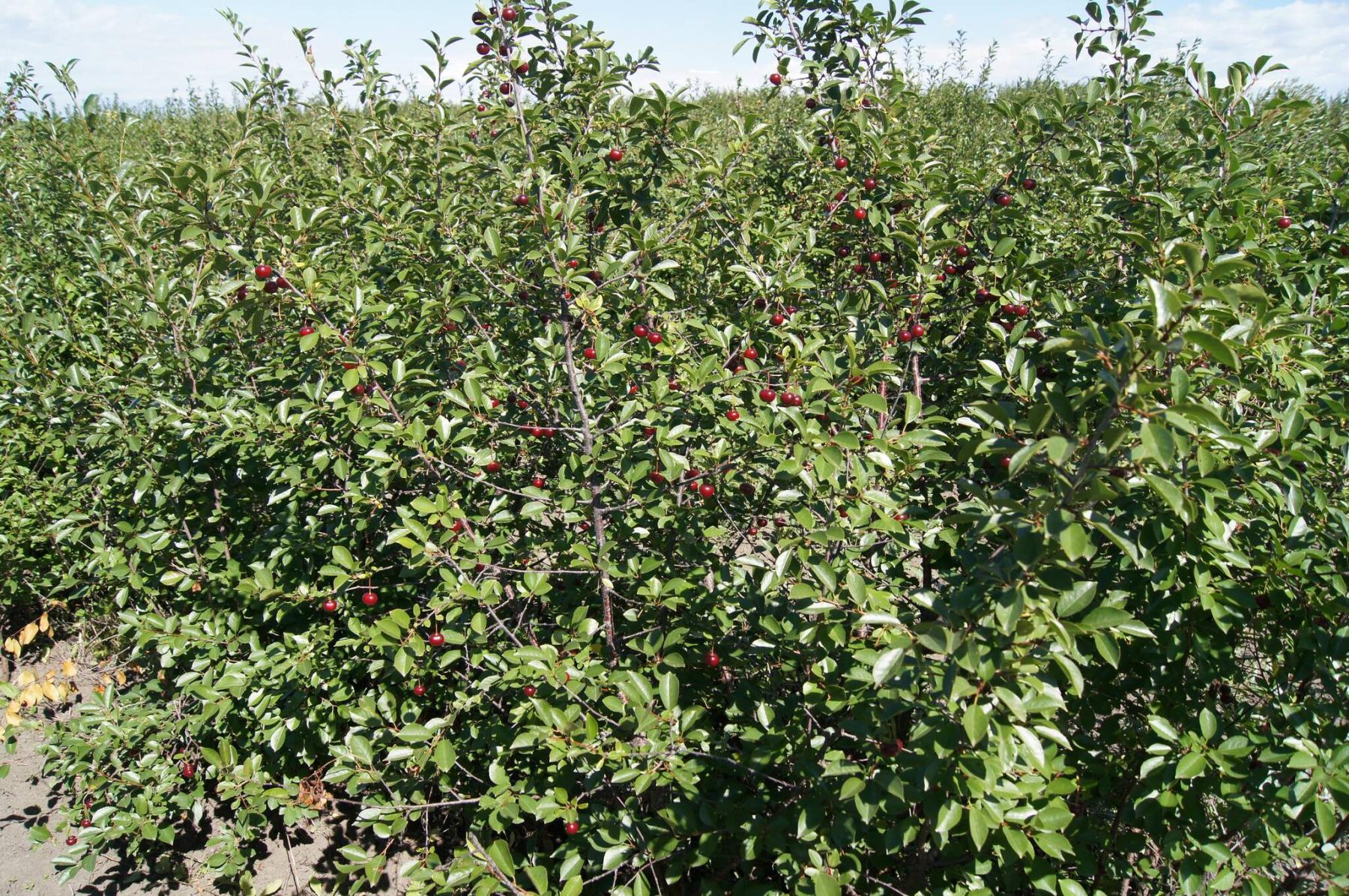



Can you almost taste the delicious flavour of homegrown fruit? Are you craving the experience of walking in your garden on a warm summer day and picking one of the crispiest prairie apples you will ever taste or harvesting a basket of juicy, prairie-bred cherries for making mouth-watering pies or juice? This spring, homeowners will discover a brand-new apple variety and a recently introduced dwarf sour cherry cultivar at local garden centres.
Every new prairie-hardy fruit that is introduced to the marketplace represents years of development and evaluation. Plant breeders are always looking for better tasting varieties with improved characteristics. Philip Ronald, a plant breeder, and researcher at Jeffries Nurseries in Portage la Prairie, says that apple trees are the easiest of all the fruit trees to grow and work with on the prairies. But over the last 25 years there have not been many new varieties of apples introduced to the prairie market.
Kandy Crisp apple is a new selection from Jeffries breeding program. “What is most unique about it is that Kandy Crisp has a real crunch to it which we have not seen before in other prairie hardy apples,” says Ronald. “If you’ve ever bitten into a Honeycrisp apple, you know what it’s like – the flesh kind of pops. It’s not only crunchy but crispy. We wanted to find that characteristic in a prairie hardy apple. Kandy Crisp, I would say, is the best that has come along so far.” Kandy Crisp has a Zone 3 hardiness rating.
Kandy Crisp comes from a controlled cross between Goodland apple and Gemini apple. “Goodland apple has for many years, at least to my mind, been the best cold hardy apple,” says Ronald. “But it definitely isn’t crunchy, and it doesn’t store all that well. Gemini is large and crispy, and it stores well but it lacks flavour.”
Ronald set out to develop a new apple that would combine the best characteristics of hardiness and fruit quality. The work began in spring of 2006. He chose three dwarf apple cultivars — Goodland, Gemini, and Norkent. “I made reciprocal crosses under greenhouse conditions, basically using a paintbrush and collecting pollen. We got a fair bit of fruit set, extracted seeds in the summer, stratified the seeds the following winter, and in spring of 2007 we planted out the progeny of those crosses.”
The tiny apple seedlings that emerged were grown indoors for one year before being planted in a field. “At that point, it was a waiting game for the apple seedlings to go into fruitfulness,” says Ronald. It would take until 2015 before Ronald discovered that one of those seedlings represented an outstanding new apple selection.
In addition to firm, crisp flesh, Kandy Crisp has large (7 to 8 cm) candy red fruit. “Another of the interesting, kind of eclectic properties of Kandy Crisp is russeting almost like brush strokes at the top of the apple,” says Ronald.
Kandy Crisp is on dwarfing rootstock which means that even after 15 or 20 years, the mature height of the fruit tree will only be two to three metres tall. “You really don’t even need a ladder. You can just stand beside it when you pick the fruit.” But Ronald also says that it is important to understand that dwarfing only refers to tree size. “When people see the words dwarf apple on a plant tag, they assume the fruit must be small. In fact, the fruit is often bigger on dwarf apple trees.”
In addition to apple trees, shrub fruits are in huge demand by homeowners. There is growing interest in using fruit shrubs as edible hedges that also offer privacy. Just imagine a fruitful hedge that only grows to a height of about six feet (180 cm) and is laden with juicy, burgundy-coloured cherries ready to harvest in early August. D’Artagnan cherry fits the bill.
Bred at the University of Saskatchewan, D’Artagnan Dwarf Sour Cherry is from the new Musketeer series. D’Artagnan is related to the popular Romance series of dwarf sour cherries introduced by Bob Bors, head of the University of Saskatchewan’s fruit breeding program, but D’Artagnan’s shorter stature by nearly two feet makes it an attractive option for backyard fruit growers.
D’Artagnan was developed over a period of 15 years. It has exceptional winter hardiness (Zone 2). The name sour cherry does not adequately describe the flavour of D’Artagnan’s fruit. “Canadians call these types of cherries sour while Americans call them tart,” says Bors. The fruit, though, is surprisingly sweet when harvested at the right time — wait until the initial red colour deepens to burgundy. Sour cherries are the cherry of choice when making cherry pie and are also excellent for making juice, preserves, or wine.
Another advantage is that the branches of D’Artagnan stay smaller than other varieties, says Bors, which makes the shrub easier to maintain with less pruning required. In fact, in plant trials, thinning out older branches was only required after 12 years compared to seven years for other cultivars.
“D’Artagnan tends to sucker a bit more than the Romance series but this is one of the qualities that makes it useful as a hedge,” says Bors. “Plant individual plants about one metre apart in a row and in a few years, allow the suckers to grow and fill in the rows. While waiting for your hedge to fill in, mulch the spaces in between the individual plants to reduce competition from weeds.”
D’Artagnan offers an advantage, too, for commercial producers because its flexible, arching branches are well suited to the use of sideways harvest machines. For the homeowner, says Bors, D’Artagnan’s fine branching with its slightly weeping habit gives it a cute, ornamental presence in the landscape in addition to its functionality as a fruit-bearing shrub.
D’Artagnan is self-fertile and does not require cross-pollination which means you only need one. You will need a full sun location, though, and well-drained soil.
colleenizacharias@gmail.com
For advice, ideas and tips to keep your outdoor and indoor plants growing, sign up to receive Winnipeg Gardener, a free monthly digital newsletter Colleen Zacharias writes for the Free Press at winnipegfreepress.com/newsletter/winnipeg-gardener



